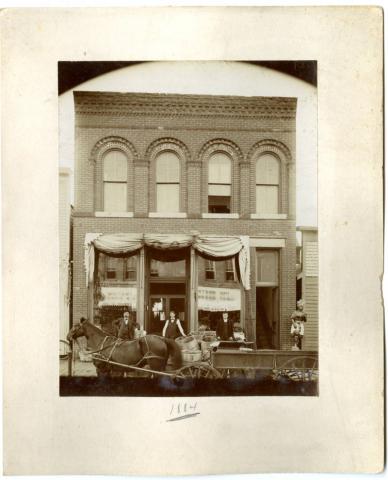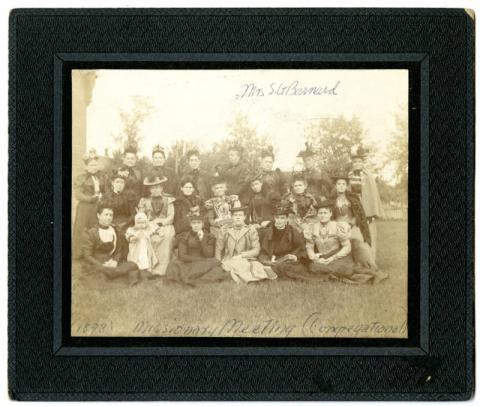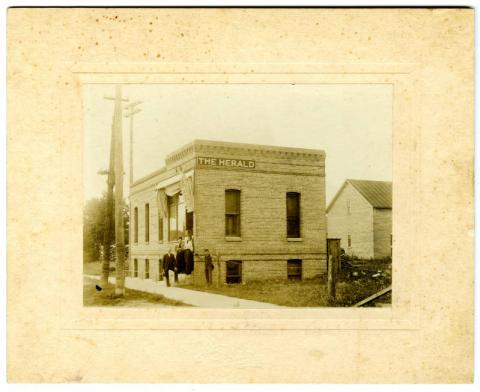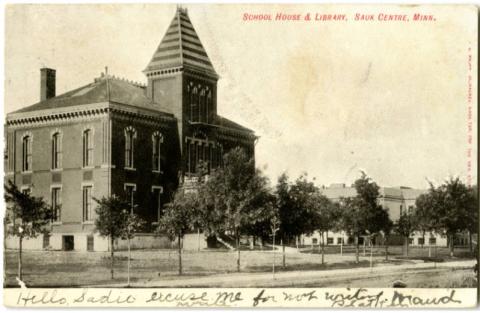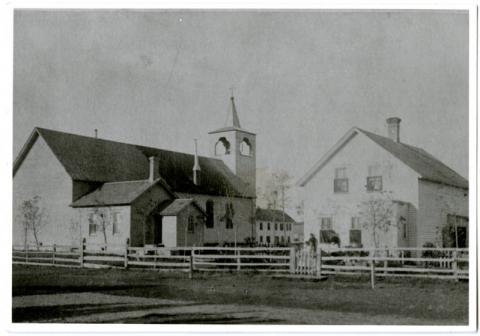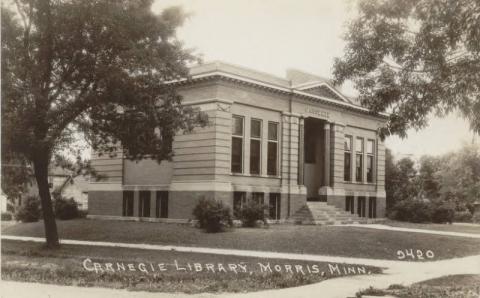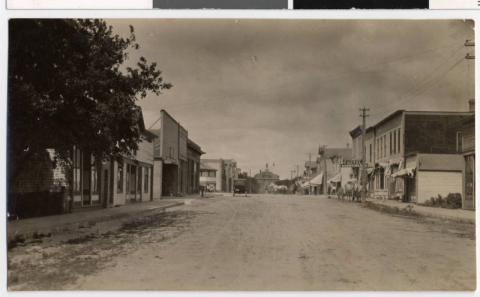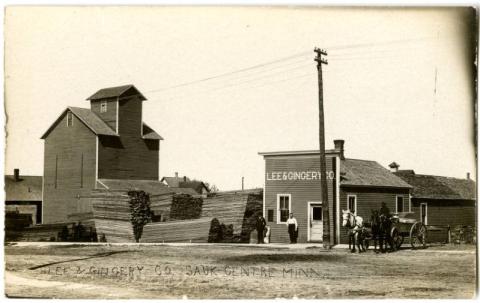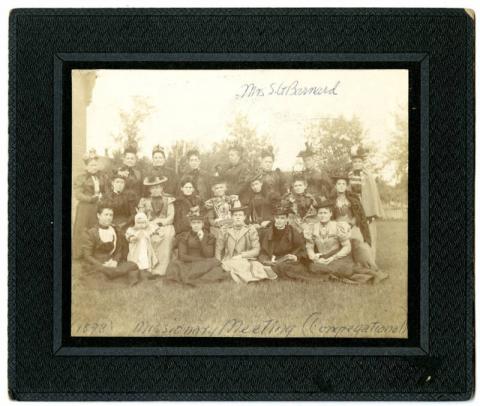Primary Source Set
by Greta Bahnemann, Metadata Librarian, Minnesota Digital Library, Minitex
Arts and Literature People of Minnesota
Sinclair Lewis's novel Main Street is a scathing indictment of life in small-town America during the early years of the 20th century. The novel tells the story of Carol Milford, a young progressive woman raised in St. Paul, who marries Will Kennicott, a small-town doctor. They return to Will's hometown of Gopher Prairie, which is a fictionalized version of Lewis' hometown of Sauk Centre, Minnesota. Carol finds life in Gopher Prairie confining. The town is ugly and the people are provincial. She rebels against the constraints of her life in a small town and her limited role as a housewife. Carol Kennicott attempts to institute progressive changes to the town's infrastructure, the library, and the women's clubs; but her attempts are met with derision and scorn.
Many of Lewis's characters are the symbolic voice of prevailing social and cultural attitudes found in America at that time. Through the actions of the main characters, Sinclair Lewis explored the ongoing pressures to belong and conform that he found in small-town America. At the time of its publication in 1920, many of Sinclair Lewis's contemporaries found the book to be bleak and depressing. Some residents of central Minnesota resented their portrayal in the book and the novel was banned by the Public Library in Alexandria, Minnesota. Today the novel survives as the author's complicated and complex view of a specific time and place.
Discussion Questions & Activities
- The era depicted in Main Street was one of great change and upheaval in American society. The years before and during World War I were marked by the rise in social movements including the labor movement, the fight for women's suffrage, and the breaking down of the 19th century class system. Do you think these events would be harder or easier for a small town to deal with?
- Do you think it is easier to live in a small town, medium-size city, a large city or suburb? Why? List some of the advantages and disadvantages of where you live.
- Look at the photographs of Sauk Centre, Minnesota (Sinclair Lewis's hometown). Did you achieve any new insights about the novel after looking at the images of the people and buildings?
- Ask students to think about a time when they wanted to change something but were met with resistance and road blocks. Ask students to write a journal entry about this experience. How did it feel when they realized they couldn't win others over to their point of view?
- Ask students to think about something they would like to change in their school such as a later start time or an addition to the curriculum, etc. Have them brainstorm ways in which they could initiate change. Write an action plan with appropriate steps.
eLibrary Minnesota Resources (for Minnesota residents)
"(Harry) Sinclair Lewis." DISCovering Authors, Gale, 2003. Student Resources In Context, https://link-galegroup-com.content.elibrarymn.org/apps/doc/EJ2101100644/SUIC?u=mnsminitex&sid=SUIC&xid=57948df4. Accessed 12 July 2019.
Lewis, Sinclair. "Excerpt from Main Street." World War I and the Jazz Age, Primary Source Media, 1999. American Journey. Student Resources In Context, https://link-galegroup-com.content.elibrarymn.org/apps/doc/EJ2164000235/SUIC?u=mnsminitex&sid=SUIC&xid=a5845dd0. Accessed 12 July 2019.
Sinclair Lewis. Britannica School. Encyclopædia Britannica, Inc., 2016. Web. 12 May. 2016.
Additional Resources for Research
Discussion Guide, "Main Street by Sinclair Lewis." American Library Association Web. 12 May 2016.
SparkNotes Editors. “SparkNote on Main Street.” SparkNotes.com. SparkNotes LLC. n.d.. Web. 27 May 2016.
"Main Street - Places Discussed" Critical Guide to Settings and Places in Literature Ed. R. Kent Rasmussen. eNotes.com, Inc. 2003 eNotes.com 14 Aug, 2017.
Fisher, Joel. “Sinclair Lewis and the Diagnostic Novel: ‘Main Street’ and ‘Babbitt.’” Journal of American Studies, vol. 20, no. 3, 1986, pp. 421–433. JSTOR.
Published onLast Updated on
